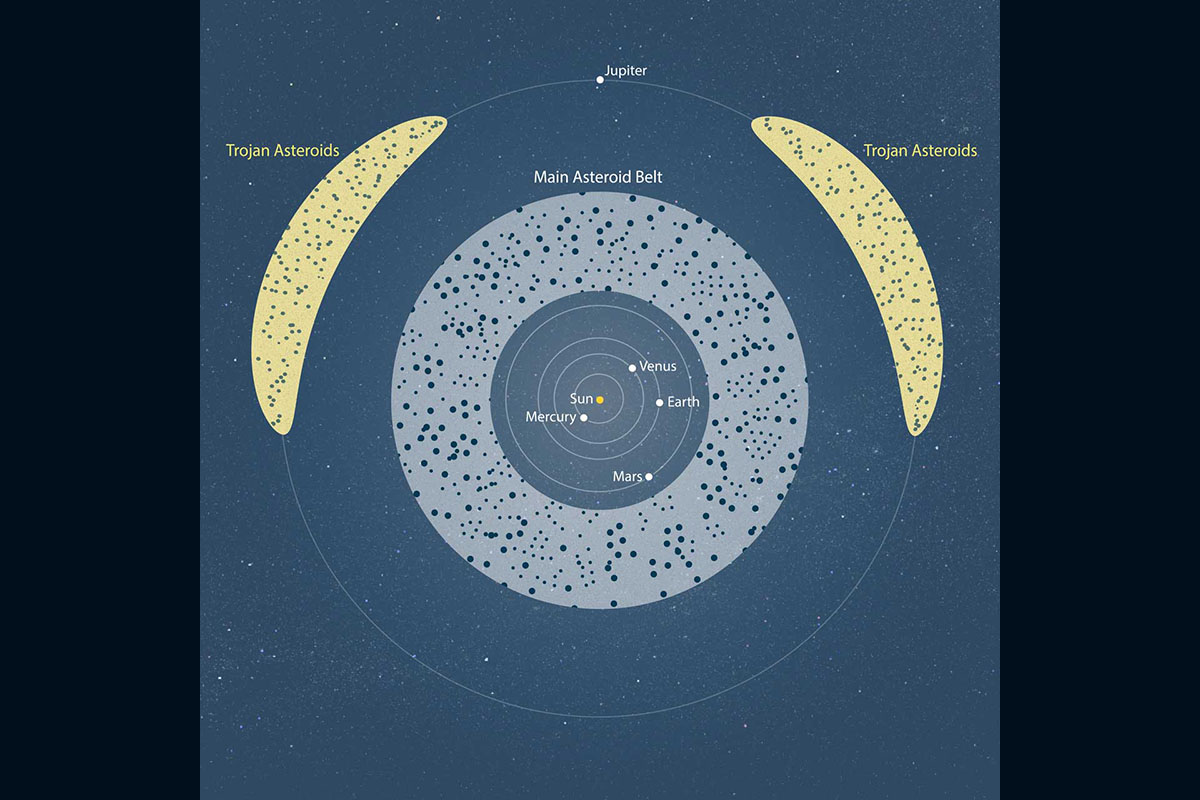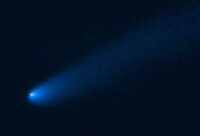The main asteroid belt lies between Mars and Jupiter, whereas Trojan asteroids both lead and follow Jupiter. Scientists now know that asteroids in the early solar system (4.6 billion years ago) adhered together and eventually formed the inner planets, including Earth. (NASA/ESA/J. Olmsted/STScI)
Home The main asteroid belt lies between Mars and Jupiter, whereas Trojan asteroids both lead and follow Jupiter. Scientists now know that asteroids in the early solar system (4.6 billion years ago) adhered together and eventually formed the inner planets, including Earth. (NASA/ESA/J. Olmsted/STScI) The main asteroid belt lies between Mars and Jupiter, whereas Trojan asteroids both lead and follow Jupiter. Scientists now know that asteroids in the early solar system (4.6 billion years ago) adhered together and eventually formed the inner planets, including Earth. (NASA/ESA/J. Olmsted/STScI)



